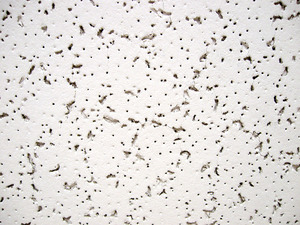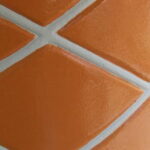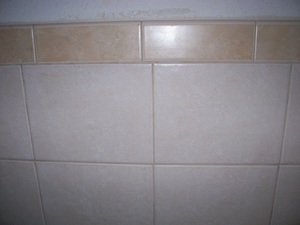Acoustic ceiling tiles are a common sight in many buildings. Unfortunately, they are also prone to water and impact damage. When my children were little, they were notorious for throwing pencils up into the acoustic ceiling tiles to see if they could get them to stick. They’d also attempt to throw baseballs and other items in the house that would cause ceiling tile damage. As such, I quickly learned how to replace damaged ceiling tiles. It isn’t really all that hard to do and it will generally take you less than 30 minutes to replace most damaged ceiling tiles. Here’s how to get the job done:
Ceiling Tile Repair Supplies
In order to complete this project, you’ll need a box of new acoustic ceiling tiles, adhesive, furring strips, a sheet rock knife and a metal edged ruler. I’d also suggest that you pick up a role of delicate painter’s tape. All the items may generally be obtained through your local home improvement store. Prices will vary of course, based on where you shop.
Removing the Damaged Ceiling Tile
Based on personal experience, I would suggest using a sheet rock knife to cut a hole in the center of the damaged ceiling tile so you can get a grip on things. Once you make the hole in the tile, you’ll be able to get your fingers up under the edge of the tile and hold it into place while you continue to cut the damaged tile free from the others. In my opinion, it tends to make removing the damaged ceiling tile easier as well as reduces the mess caused by falling tile.
Preparing the Damaged Ceiling Area for the Patch
Continue by cleaning the newly exposed area. Before you even attempt to install the new ceiling tile, the patch area will need to be free of old adhesive, furring strips, staples and other debris. Otherwise, your new ceiling tile will not fit properly. After the area to be patched has been cleared of debris, trim the edges of your replacement ceiling tile using a sheet rock knife and a metal edged ruler as a guide. Be careful not to destroy the ceiling tile’s rabbet joint in the process. You’ll need it in order to secure a proper fit. I initially learned that the hard way.
Installing the Replacement Ceiling Tile
At this point, some folks immediately apply the new adhesive and attempt to install the new ceiling tile. Personally, I prefer to make sure that the new ceiling tile will fit first before applying the glue. Once I’ve checked the fit, I’ll apply the fresh adhesive and furring strips to the patch area. With the new furring strips and fresh adhesive in place, continue by inserting one edge of the ceiling tile into position. Then press the rest of the tile’s surface area to the ceiling. Whatever you do, do not reduce the pressure or remove your hand from the ceiling tile until the adhesive has had sufficient time to stick. Otherwise, the tile could fall and leave you with a new mess to contend with. With that said, sometimes I’ll even go one step further and lightly attach a piece of delicate painter’s tape around the new ceiling tile’s seam until after the adhesive as cured. Whether or not you opt to do the same is entirely up to you.
Killeen Gonzalez has a history of completing home improvement projects with her family.
More from this contributor:
How to Pinpoint Leaks in a Roof
How to Repair a Hinged Door
How to Repair a Nylon Webbed Lawn Chair
How to Make Spun Sugar Garnishes and Bird’s Nests





